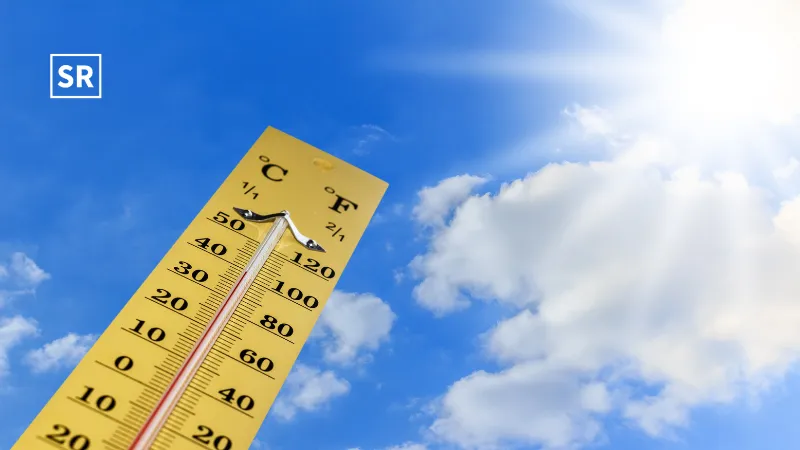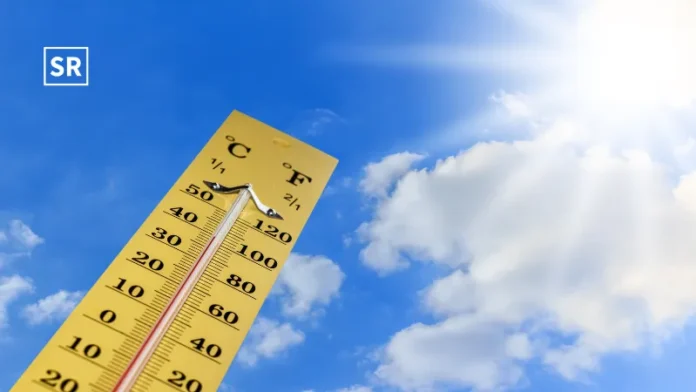
When you hear temperatures like –40°C or 40°F, you might wonder which one is colder. Celsius and Fahrenheit are two different ways to measure temperature. But it’s simple: –40°C and –40°F are actually the same temperature.
Why –40°C Equals –40°F
–40°C equals –40°F because of the way the Celsius and Fahrenheit temperature scales are connected. Celsius measures temperature with 0°C as the freezing point of water and 100°C as the boiling point, while Fahrenheit uses 32°F for freezing and 212°F for boiling.
To change Celsius to Fahrenheit, you use the formula: °F = (°C × 9/5) + 32. If we put –40°C into this formula, it becomes (–40 × 9/5) + 32, which is –72 + 32, giving –40°F.
This is the only temperature where Celsius and Fahrenheit are the same. It shows that –40 is the point where the two scales meet. At this temperature, both scales read the same, even though they usually show very different numbers.
Which Is Colder: –40°C or –40°F?
When comparing –40°C and –40°F, they are actually the same temperature. This is because –40 is the point where the Celsius and Fahrenheit scales meet. So, neither is colder—they are exactly equal.
How to Convert °C to °F and Vice Versa
To change Celsius to Fahrenheit: °F = (°C × 9/5) + 32
To change Fahrenheit to Celsius: °C = (°F − 32) × 5/9
| Description | Celsius (°C) | Fahrenheit (°F) |
|---|---|---|
| Freezing Point of Water | 0°C | 32°F |
| Boiling Point of Water | 100°C | 212°F |
| Temperature Where They Match | –40°C | –40°F |
Why Celsius and Fahrenheit Are the Same at –40
Celsius and Fahrenheit meet at –40 because of how the two temperature scales are made. Celsius is based on water, with 0°C as freezing and 100°C as boiling. Fahrenheit sets freezing at 32°F and boiling at 212°F. Since the scales grow at different rates, most temperatures have very different numbers.
However, there is one temperature where both scales show the same number, and that is –40. Using the conversion formulas—°F = (°C × 9/5) + 32 and °C = (°F − 32) × 5/9—you can see that –40°C equals –40°F. This is the only point where the two scales match exactly.
What About –4°C? Is That Freezing?
–4°C is below the freezing point of water, which is 0°C, so it is considered freezing. At this temperature, water can turn into ice, and frost may form on surfaces.
While –4°C is not as cold as –20°C or –40°C, it is still cold enough to make roads, sidewalks, and other surfaces icy and slippery. People need to wear warm clothes like jackets, gloves, and hats, especially if it is windy.
Freezing does not mean extreme cold—it just means the temperature is low enough for water to freeze. –4°C is common in winter in many places and can affect plants, animals, and daily activities if proper precautions are not taken.
Conclusion
Temperatures in Celsius and Fahrenheit can be confusing, but some key points make them easier to understand. –40°C and –40°F are the same temperature, which is the only point where the two scales match. Any temperature below 0°C, like –4°C, is freezing because water can turn into ice, even if it is not very cold. Knowing how to convert between Celsius and Fahrenheit and understanding freezing points helps us stay safe in cold weather and protect plants, animals and daily activities during winter.
FAQs
What temperature is –40°C in Fahrenheit?
–40°C is exactly –40°F. This is the only temperature where both Celsius and Fahrenheit are the same.
Which is colder, –40°C or –40°F?
Neither is colder—they are the same temperature.
How do you convert Fahrenheit to Celsius?
Use the formula: °C = (°F − 32) × 5/9.
What does freezing mean?
Freezing means the temperature is low enough for water to turn into ice, which happens at 0°C (32°F) or lower.





